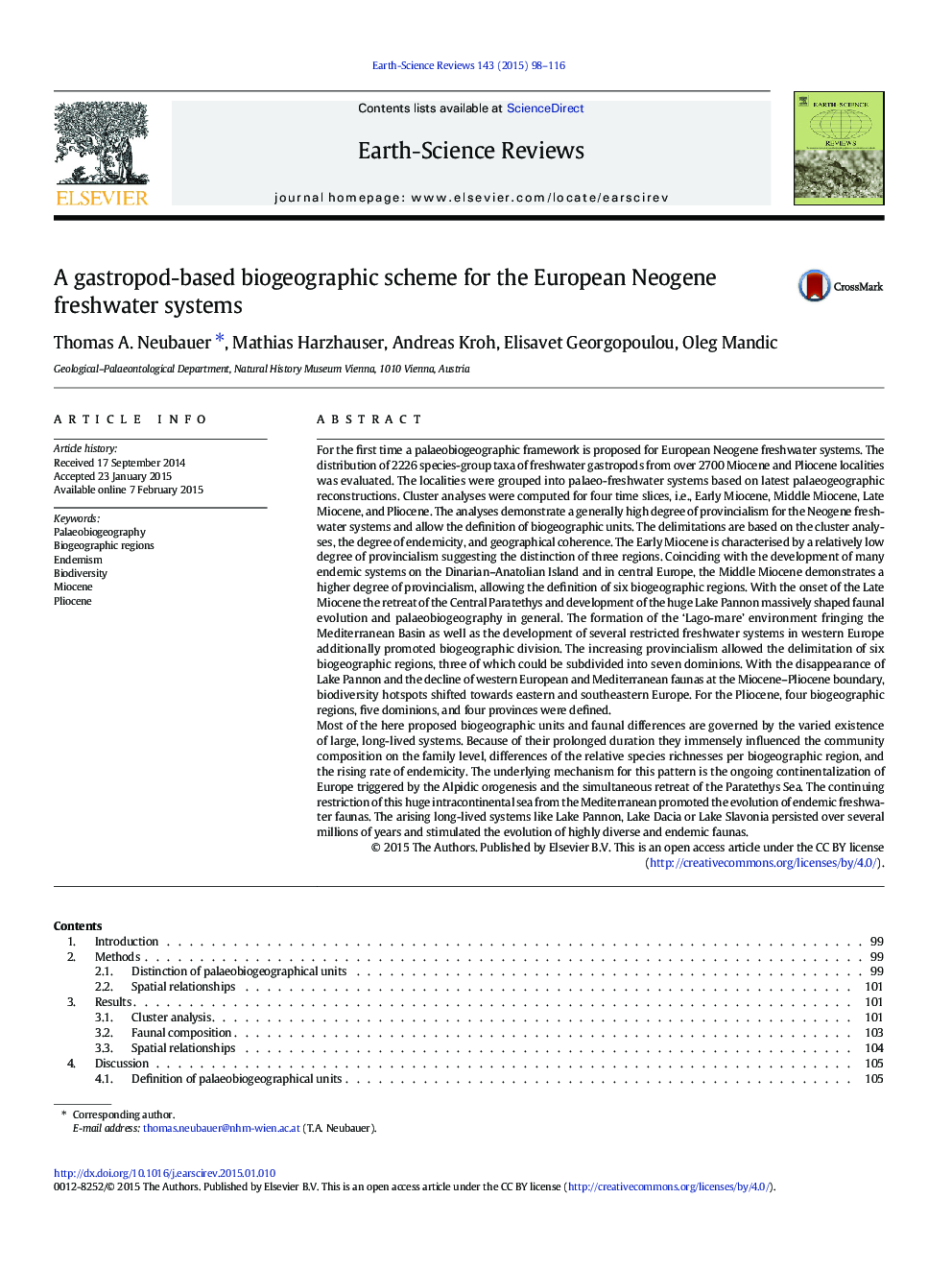| کد مقاله | کد نشریه | سال انتشار | مقاله انگلیسی | نسخه تمام متن |
|---|---|---|---|---|
| 6443033 | 1639959 | 2015 | 19 صفحه PDF | دانلود رایگان |

For the first time a palaeobiogeographic framework is proposed for European Neogene freshwater systems. The distribution of 2226 species-group taxa of freshwater gastropods from over 2700 Miocene and Pliocene localities was evaluated. The localities were grouped into palaeo-freshwater systems based on latest palaeogeographic reconstructions. Cluster analyses were computed for four time slices, i.e., Early Miocene, Middle Miocene, Late Miocene, and Pliocene. The analyses demonstrate a generally high degree of provincialism for the Neogene freshwater systems and allow the definition of biogeographic units. The delimitations are based on the cluster analyses, the degree of endemicity, and geographical coherence. The Early Miocene is characterised by a relatively low degree of provincialism suggesting the distinction of three regions. Coinciding with the development of many endemic systems on the Dinarian-Anatolian Island and in central Europe, the Middle Miocene demonstrates a higher degree of provincialism, allowing the definition of six biogeographic regions. With the onset of the Late Miocene the retreat of the Central Paratethys and development of the huge Lake Pannon massively shaped faunal evolution and palaeobiogeography in general. The formation of the 'Lago-mare' environment fringing the Mediterranean Basin as well as the development of several restricted freshwater systems in western Europe additionally promoted biogeographic division. The increasing provincialism allowed the delimitation of six biogeographic regions, three of which could be subdivided into seven dominions. With the disappearance of Lake Pannon and the decline of western European and Mediterranean faunas at the Miocene-Pliocene boundary, biodiversity hotspots shifted towards eastern and southeastern Europe. For the Pliocene, four biogeographic regions, five dominions, and four provinces were defined.Most of the here proposed biogeographic units and faunal differences are governed by the varied existence of large, long-lived systems. Because of their prolonged duration they immensely influenced the community composition on the family level, differences of the relative species richnesses per biogeographic region, and the rising rate of endemicity. The underlying mechanism for this pattern is the ongoing continentalization of Europe triggered by the Alpidic orogenesis and the simultaneous retreat of the Paratethys Sea. The continuing restriction of this huge intracontinental sea from the Mediterranean promoted the evolution of endemic freshwater faunas. The arising long-lived systems like Lake Pannon, Lake Dacia or Lake Slavonia persisted over several millions of years and stimulated the evolution of highly diverse and endemic faunas.
Journal: Earth-Science Reviews - Volume 143, April 2015, Pages 98-116